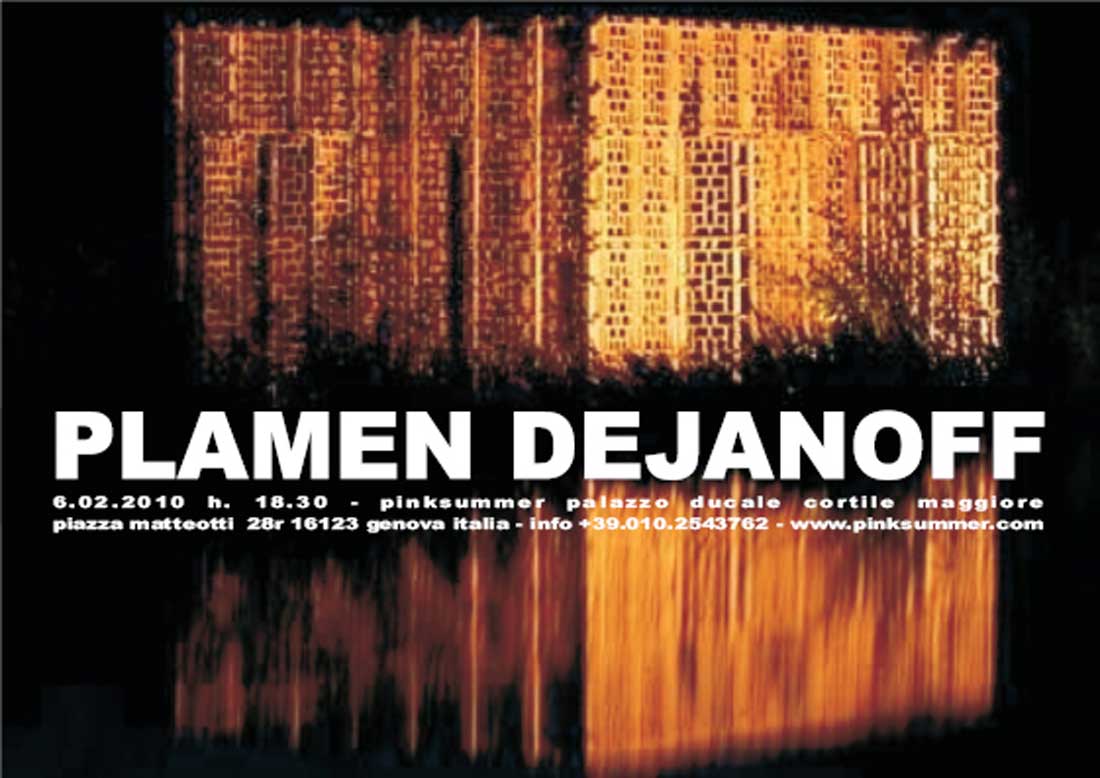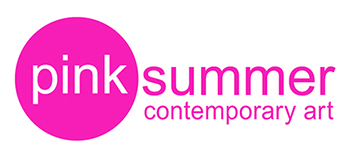Plamen Dejanoff

Press-release
We were naive to interpret Plamen Dejanoff’s manufacturing turn, which happened around 2005, as a return to the tangibility of the work, after years and years of consistent post-productive remix. Dejanoff was actually picking up the last drift of luxury, harboured inside the new age folds of the energetic aura emanated from what surrounds us: environment, objects, food, pets. Anyway the diktat on which the western world relies on (and given the partial universalism of the doctrine, with western we don’t mean any specific geographic connotation), is that consumption must change.
From that moment on “the small people” elite would have been ready to dismiss with a concealed embarrassment the heavy Cayenne in favour of the electric car; M&M’s candies and Coca Cola cans would have been replaced in people’s pantries with wholemeal kamut cookies and strictly organic soya and blueberry juices; in our homes industrial design objects would have been replaced with the unique, eco-solider and eco-compatible objects linked to places and tradition, made unique by the imperfections typical of craftsmanship.
It was no more time for Dejanoff to mix expensive design objects with “waiting-list” artist’s works on smooth and translucent platforms, he had to pick up sculpture and, in some way, painting, portrait even; he had to come back to traditional materials like marble, bronze, wood, ceramic, glass, and, most of all, the products had to be rigorously hand-made, with a certificate of authenticity of craftsmanship, and no matter if not made by his hands, because at the end his brand is printed with huge letters on the objects that, from the time of post-production, have inherited the pop gene of his western heroes Andy Warhol and Jeff Koons, and in a even worse way, also from his eastern hero Sigmar Polke.
With the “New Works” Plamen Dejanoff was about to start his long-term complex project “Planet of Comparison”.
Plamen Dejanoff has been defined a marketing-oriented artist, others think that he economizes art, others that he culturizes economy, as a matter of fact that fascination lacking of any critical distance towards the speculative capitalism deprived of its productive “affectivity”, marks him as an artist that had to deal with the iron curtain.
Artistic projects and life are always so deeply interlaced in his works, that it is difficult to understand when reality ends and representation starts, and, even admitting that the real and the fictitious are very relative, not only today, but always, we think (hope) to see in these modalities the icy cynicism of a hacker that carries out in his projects a sort of simulation (Capitalism Iperreal Ism. Perhaps.).
It was back in 2002 when we supported a segment of his paradoxical marketing-identity operation based on the concept of brand, that he bravely called “Collective Wishdream of Upperclass Possibilities”. He made us buy the cover of Flash Art Italia n. 122 to represent himself, after the breaking off of the duo Heger/Dejanov, with a new name, a new city, a new home/studio, a new auto and a logo all for himself commissioned to the most “stylish” studio in Paris.
Relying upon professionals of the corporate marketing, whose know-how had nothing to do with the individual and his tragedies, was his way of restart after a powerful crisis, and with hindsight – but this interpretation might be a bit too incline towards a romanticism to be shared by Dejanoff – a strategy to alienate the pains of existence in a cold place, a place of non-belonging. After this project with a very unpleasant title, his descendents carry on a name created by the professionals of a visual agency.
Once he said: “I’m interested to think about art by means of pre medium of automobile”, and in fact car is very central to Dejanoff’s poetic based on a dual process of dematerialization and sublimation, similar to the one used by economy with sub primes.
For his second solo show at pinksummer he chose a photograph of himself at the age of 3 or 4 on a very luxurious small pedal car in a park in Sofia. At the first meeting with pinksummer he showed up with a BMW sport car that was the product of a contract he and Swetlana Heger had signed in 1999, to give, for a whole year, to the Munich based automaker, the spaces inside museums and publications of the exhibitions they had been invited to participate; BMW used the deal to find new potential vectors of marketing in the cultural world.
In 2002, at pinksummer, next to a pile of n. 122 Flash Art Italia magazines with the logo and the building of Ernst&Gruntuch in Hackesher Markt in Berlin, Dejanoff presented “Alle Autos”, a series of crystal models of different types of cars that the visual agency he had contacted to change skin, had suggested him in order to understand which one would have suited him better with the new identity they were creating for him. Objects are no more just an extension of the individual, but rather an essential part of an easy assembled and dismantled identity, like a lego construction.
In 2006 Dejanoff presented at the Kunsthalle in Kiel a performance that had the same title of Sigmar Polke’s painting “Hohere Wesen Befalen (Highter Beings Comand”): the work by Polke shows, on a completely white canvas, a black triangle on the right top angle; Dejanoff’s “higher commands” showed him on a black Porsche Cayenne whose aesthetically pleasant Porsche mechanics (blue dungarees, red t-shirt, yellow Asics sneakers), accompanied by a dj set, were changing the original parts with even more refined and expensive parts. It was on that occasion we discovered that a ceramic brake of a Cayenne costed like a Fiat Panda, we were shocked and started to pay attention to those cars we saw during the day, even in the streets of very frugal Genoa.
Dejanoff in “Highter Beings Comand” shows in a very explicit way his a-critical and a-political falseness towards the capitalist doctrine, inspired by the “Capitalism Real Ism” of Polke that, like the “Socialist Realism” with soviet communism, focused on the libertarian hypocrisy of democracies built on consumption, coming to the logical conclusion that, to keep those liberties and those democracies, a planned consumption had to be ordered from the top. The video created with the performance “Hohere Wesen Befalen” was also presented on an evening organized by Porsche for its VIP clients. Dejanoff knows how to play at Trojan horse.
Regarding the press release, we made this long excursus on Plamen Dejanoff’s work, moved by a urge to justify the third solo exhibition of a very complex and refined artist that, actually, never feels the urge to justify anything, not even statements like “But art is a luxury item, anyway so everything we do is luxury.
Just having the idea of making something in bronze is a luxury”. Mentioning “Capitalism Real Ism” and luxury items though, it is not by chance that the announcement of the bankruptcy of Lehman Brothers had coincided with sky-high hammer prices and the sold out auction/performance by Damien Hirst at Sotheby’s in London; the following auctions by the big auction houses would have been a disaster.
As for his third solo show at pinksummer, Plamen Dejanoff will present a fragment, or rather, an impeccable abstraction, produced for the exhibition, of the bronze pavilion we first entirely saw on the occasion of his solo exhibition at Mumok in Vienna.
Light and fret worked like an embroidery, and at the same time steady and heavy like the grating of a prison, the bronze pavilion is representative of his real estate project titled “Planet of Comparison”. The project comes from a contingent fact linked to the artist’s biography: the purchase or the inheritance, at the end of communism, of seven houses in his native town Veliko Tarnovo, medieval capital of Bulgaria and epicentre of the Balkans.
Dejanoff had meant to intervene on those vernacular architectures calling famous Western European architects to create a museum quartier through the joint venture with Western European cultural institutions.
Craftsmanship and materials, about which we have no specific information, we believe instead come from Eastern Europe. In a few words, this is strictly an operation of colonization, the same one that, masked by the word “integration”, the enterprises did, as usual before governments, when the Wall came down.
The Planets flow in the Universe, far from each other, they can be mutually influenced, but only in a very remote way, interaction is impossible because there is the risk of a collision, of a catastrophe.
We have reasons to believe that in “Planet of Comparison”, the museum quartier in Veliko Tarnovo, just in part or fully realized, Plamen Dejanoff compares two extraneous planets, those of the two Europes.


